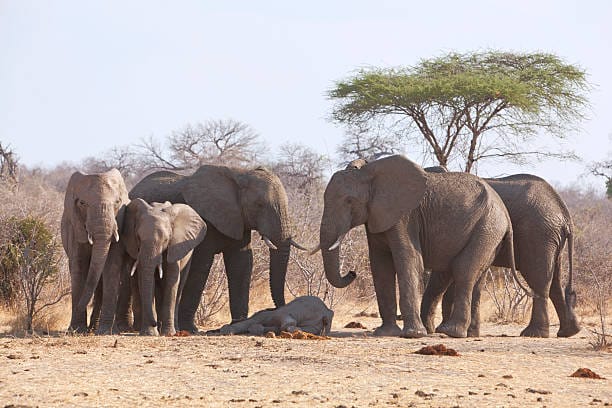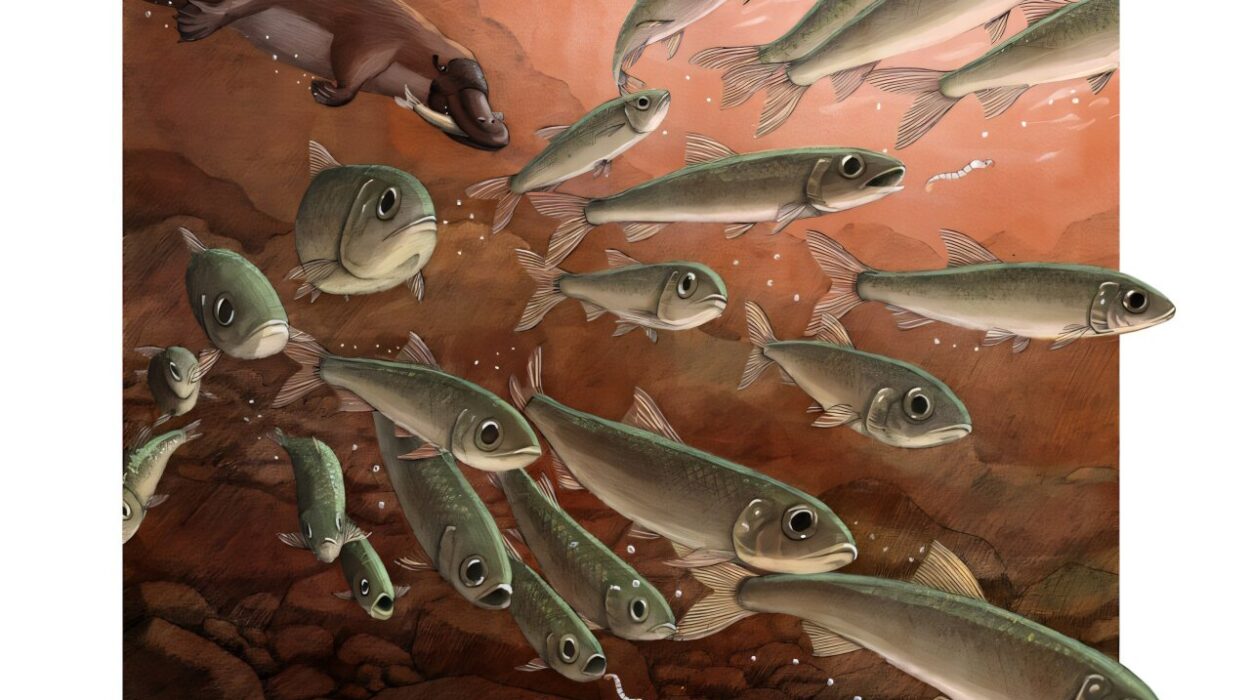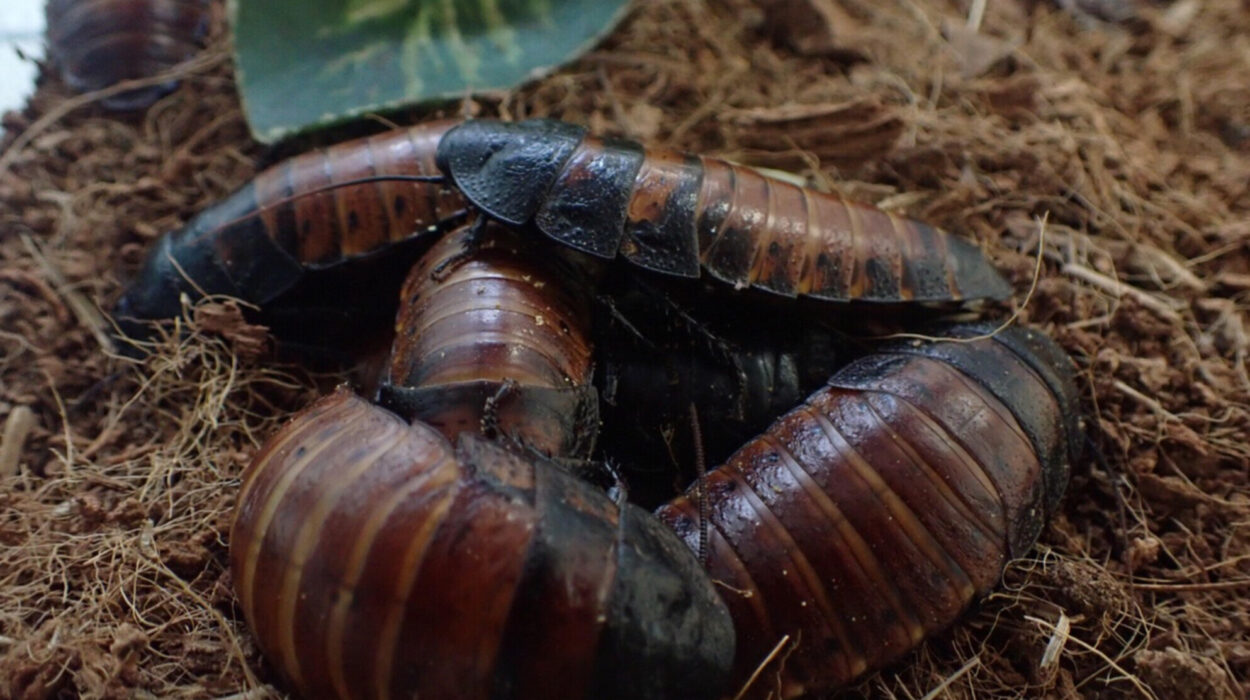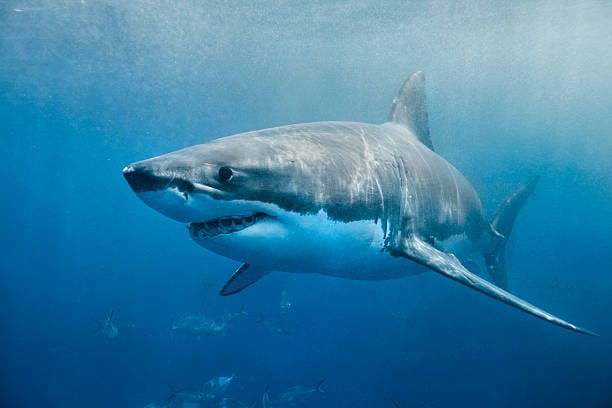To observe an animal in its natural habitat is to step into a hidden dimension—one where meaning isn’t spoken but acted, danced, displayed, or vibrated. These behaviors are more than instincts. They are the evolved expressions of life adapting, surviving, and even feeling. And once decoded, they reveal astonishing layers of intelligence, strategy, and even emotion.
From the mourning rituals of elephants to the collective consciousness of ant colonies, the animal kingdom is full of revelations that challenge our notions of thought, communication, and awareness. Here are seven scientifically fascinating examples of animal behavior that speak to the silent genius of the natural world.
1. The Elephant’s Grief: Mourning and Memory in Giants
In the wild stretches of Africa and Asia, when an elephant falls, something extraordinary occurs. Herd members gather around the body. They touch the tusks and bones with their trunks, linger in silence, and sometimes vocalize in low, haunting rumbles. These are not random acts—they are mourning rituals. Elephants return to the same spot years later, interacting with the remains, as if paying respects.
Renowned ethologist Dr. Joyce Poole has documented this phenomenon, observing how elephants appear to grieve not just for kin, but sometimes for unrelated dead elephants. Some have even shown interest in human bones. The behavioral patterns—revisitation, gentle touching, social stillness—suggest a cognitive recognition of death and a shared emotional response to loss.
The implications are staggering. Mourning is not a behavior we often attribute to animals, but here it is—palpable and documented. It suggests emotional complexity, memory, and even a primitive form of empathy. These beings, with brains structured for advanced cognition and communication, possess not only survival instincts but hearts that seem to ache in grief.
2. The Dance of the Bees: Geometry in the Dark
Inside the buzzing hive, in complete darkness, a foraging honeybee returns and begins to dance. But this isn’t random movement—it’s precise choreography. In a figure-eight pattern, she performs the waggle dance, a form of symbolic language discovered by Nobel laureate Karl von Frisch.
The bee’s angle of movement correlates with the sun’s position, while the length and vigor of her “waggle run” communicates the distance and quality of the food source. This remarkable system conveys information about a flower patch potentially miles away.
Even more impressive is the flexibility of this dance. Bees can adjust their movements based on changing environmental conditions—wind, light, scent, and even threats from predators. In essence, the hive has a living GPS system, taught not by words, but through synchronized vibration.
In decoding this language, we learned that honeybees—despite their tiny brains—possess an incredible capacity for symbolic communication and collective decision-making. It is a testament to the brilliance of evolution that such sophisticated messaging occurs in complete darkness, all driven by a devotion to the greater good of the colony.
3. Dolphins and Names: Whistles in the Deep
Beneath the waves, dolphins live in a world defined not by sight, but by sound. And in that world, bottlenose dolphins exhibit something almost surreal—they use names. These “names” are specific signature whistles that each dolphin invents as a calf and carries throughout life.
Marine biologists like Dr. Vincent Janik have shown that these whistles are used by dolphins to call out to one another, even across long distances. When one dolphin mimics another’s signature whistle, it’s not just echoing—it’s actively calling them, much like a person shouting your name in a crowd.
This form of acoustic labeling hints at complex social structures and memory systems. It suggests that dolphins recognize individual identities, maintain social bonds, and recall relationships long after physical separation.
Their world is not just echolocation and sonar—it’s social communication layered with nuance, intention, and recognition. That dolphins, with entirely different evolutionary paths, developed name-like identifiers challenges our assumptions about language and individuality. It’s a reminder that intelligence swims in many forms, not just the ones that resemble our own.
4. The Octopus Puzzle: Intelligence From Another World
With arms that seem to think for themselves, camouflage that outsmarts cameras, and escape skills Houdini would admire, the octopus is one of Earth’s most alien intelligences.
In aquariums, octopuses have opened jars from the inside, unplugged drains, and even recognized specific keepers. In the wild, they’ve been observed using coconut shells and rocks for protection—clear signs of tool use. Their neurons are distributed: two-thirds reside not in the head, but in the arms, which can taste, touch, and act semi-independently.
What’s perhaps most haunting is that despite their cognitive depth, octopuses are short-lived. Most die after a single reproductive cycle, and some species live for only a few years. Their intelligence seems like a brief evolutionary flare—a spark that lights up the darkness of the ocean for just a moment.
And yet, that spark is undeniable. Their behavior—problem-solving, exploration, play—suggests consciousness. It’s a reminder that the tree of life grows intelligence in more shapes than we can imagine, including those with blue blood and no bones.
5. Wolves and the Hidden Rules of the Pack
Long misunderstood as bloodthirsty or solitary predators, wolves are now recognized as some of the most socially complex mammals on Earth. The myth of the “alpha wolf” dominating by brute strength has been debunked. In reality, wolf packs are family units led by breeding pairs—what we’d call “mom and dad.”
Within the pack, roles are shared and respect is earned. Wolves teach, protect, and play with one another. They care for the injured, share food, and hunt with coordination that rivals military tactics. Using subtle body signals, postures, and vocalizations, they navigate hierarchy and cooperation without chaos.
The restoration of wolves to Yellowstone National Park demonstrated their ecological importance. By regulating prey populations, wolves indirectly restored vegetation, stabilized riverbanks, and allowed diverse species to flourish. Their presence rippled through the ecosystem—a top-down restructuring known as a trophic cascade.
Beyond ecology, decoding wolf behavior helps us understand the deeper power of family, trust, and leadership rooted not in fear, but in responsibility. The wolf is not a symbol of dominance—it is a symbol of community.
6. Ants and the Superorganism: Intelligence Without a Brain
An ant alone is nearly helpless. But a colony? It becomes a superorganism—a living network with intelligence emerging from simple rules followed by thousands of tiny bodies.
Through pheromones, ants communicate roadmaps, food sources, dangers, and tasks. They build bridges with their bodies, dig complex tunnel systems, tend to fungal crops, and even raise herds of aphids for “milking.” All of this without a central command. No one ant knows the full plan. And yet, the plan unfolds with eerie precision.
The genius of ants lies not in individuals but in the collective. Their ability to reroute around obstacles, prioritize tasks, and respond to environmental shifts is so effective that engineers now study ant colonies to develop algorithms for traffic flow, robotic swarms, and distributed computing.
Ant behavior teaches us that intelligence doesn’t need a big brain or singular control. Sometimes, wisdom lies in numbers, in systems, in cooperation beyond ego.
7. Crows and the Art of Insight
Their black feathers shimmer with subtle blues and purples. Their eyes seem to look right through you. And their minds? Capable of solving puzzles, planning ahead, and understanding the concept of tools.
Crows, along with their cousins ravens and jays, belong to the corvid family—perhaps the smartest birds on the planet. In one famed experiment, a New Caledonian crow named Betty bent a wire into a hook to fish out food—without being trained to do so. Others have solved multi-step puzzles involving water levels, levers, and tokens, showing foresight and problem-solving once thought exclusive to apes.
They also remember human faces—especially those who threaten or feed them—and pass that knowledge along to their kin. In some places, crows even bring gifts to people they trust, from shiny buttons to pebbles.
Their playfulness is another clue to cognition. They slide down snowy rooftops, toss sticks for fun, and engage in social games. They also mourn their dead, gathering around fallen crows in silent “funerals,” likely as a way to assess danger or simply understand.
Crows, though separated from humans by millions of years of evolution, still arrived at a kind of self-awareness that stuns us. They remind us that nature’s mental magic doesn’t need a human face to shine.
Reflections in the Animal Mirror
When we decode animal behavior, we’re not just gathering data—we’re rewriting the boundaries of intelligence, communication, and emotion. We’re beginning to understand that minds come in many forms. Some speak in sonar, some in scents, some in dances or vibrations. Some weep without tears. Others feel without a face we recognize.
Ethology—the science of animal behavior—has exploded in the last century, revealing layers of complexity in species we once overlooked or misunderstood. What seemed like “instinct” turns out to be strategy. What seemed like “cute” is often profound. And what seemed inhuman is, in truth, a reflection of our shared evolutionary tapestry.
Each of these seven examples peels back a layer of the great mystery. They don’t just show us animals. They show us ourselves—our emotions, our intellect, our relationships—mirrored in feathers, fur, fins, and chitin.
And perhaps the most humbling realization is this: we are not the only minds that wonder, plan, grieve, love, or learn. The Earth is full of voices. We have only just begun to listen.






